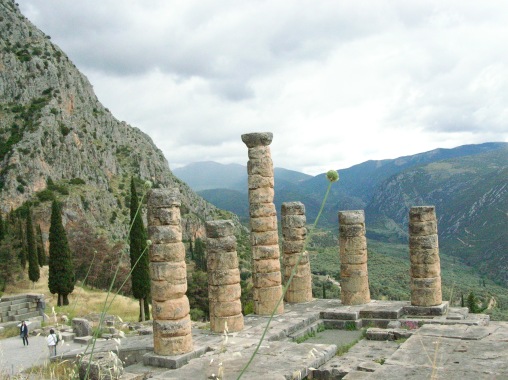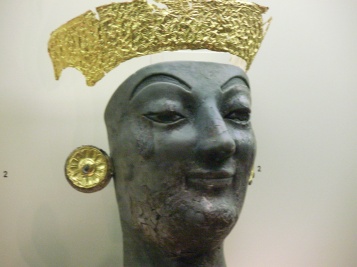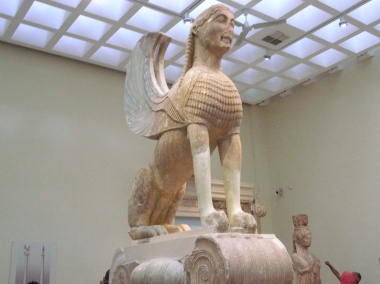
Le Théâtre de L’ Homme Actor’s Laboratorium / LeTHAL
Theatre Research & Performance Ensemble
Co-artistic directors: Dawn Obokata Ryszard Nieoczym
Since 1984 LeTHAL has been in direct collaboration in all the theatre research projects with the Quebec based theatre company le contre-courant under the artistic direction of Nicole Champagne and Jane O’Reilly.
Artistic Vision
LeTHAL ’s artistic vision sees theatre as wilderness within civilization sounding and revealing the depths of the invisible realm of imagination: the Underworld. The theatre experience for the audience in the performance and for the performer during the research and rehearsals periods is an immersion into the realm of the mythic. We call our type of theatre Imaginal that is based on poesies of soul; that soul is primarily a poetic process of cognition and as such is closely linked to the theatrical process of creation.
Imaginal Theatre research and Soundings
are an exploration of depth, soul, and images
springing spontaneously into play.
This is not therapy.
For me, in theatre therapy is a sickness
and what theatre needs today is
to be cured of therapy.
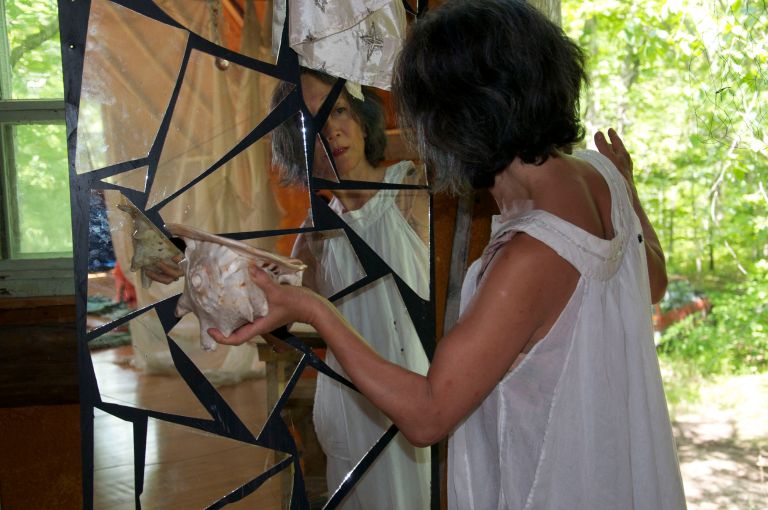
Imaginal Theatre is rooted in archetypes. This archetypal dimension can only be experienced as image which is why I call our theatre Imaginal Theatre. Images which live below the surface of ordinary life, however, remain invisible while still continuing to exert direct influence on daily activities. To make visible these invisible images of the underworld is the task of the performers during the research and rehearsal exploration process on a theatre production. The same holds true for participants during the Soundings work / play process.
Archetypes
are styles of consciousness
patterns of behavior
forms of fantasy.
What Hillman and Jung call the ” soul” I term ‘the wilderness animal’, that subdued and caged primal aspect of the human psyche which the controlling forces of civilization ignore or actively deform.
Imaginal Theatre and the poesies of Soul
“By soul I mean a perspective rather than a substance, a viewpoint towards things rather than a thing itself…The word ‘soul’ refers to that unknown component which makes meaning possible, turns events into experiences, is communicated in love and has a religious concern…Soul refers to the deepening of events into experiences… that mode of perception which recognizes all realities [dream images, fantasy, reflective speculation] as primarily symbolic or metaphorical.” James Hillman, Dreams and The Underworld.
What is theatre? Theatre stands – has its loci – at the triple crossroads where the depths of human experience intersect with ordinary life and are transformed by imagination into the imaginal realm: fantasy. The conclusions we have reached from our researches state that all theatre is imaginal. I.e. rooted in images.
Nicole Champagne in the Song of Songs
Theatre & The Underworld
Theatre research began for us with the recognition that most if not all conventional theatre is moribund if not already dead, and in need of either revitalizing or administering le coup de grace. Those of us who have not yet succumbed to despair and still cherish the dream of a revitalized theatre conduct theatre research. What follows is the highly personalized and idiosyncratic perspective of the directions pursued by LeTHAL in collaboration with le contre-courant. Long live Don Quixote!
Theatre research is a sounding of the depths of human experiences within the psyche which we call soul. Thus, theatre research is one form of soul work/play. Soundings is a nautical term used analogously to indicate how we measure the depths within our work/play process. By depth we mean the realm of images and fantasy which is the provenance of imagination. In ancient Greece, mythically speaking, it was called Hades or the underworld. And this was the home [among other things] of images {including dreams}, death and wealth. In ancient myths the entrances to the underworld were all located only in the wilderness: beyond the city limits, or what we call the wild spots within the city boundaries.
Night Legends
To summarize: we conduct soundings to explore depths; depths which we believe contain incredible wealth. To reach these depths in the Underworld we need to discover and preserve wilderness areas which are the gateways to hidden psychic riches. Theatre performances for us are one way in which to share the riches of the underworld with an audience.
LeTHAL & Le contre-courant: Research collaboration
The Search for Primal Images
LeTHAL & Le contre-courant began the research in 1992 at Buck Lake, Ontario, near Orillia every summer during the months of June and July. By establishing a network of like minded explorers in 1994/95 Wildflecken Theater/Berlin and Tanz und Theater Werkstatt/ Ludwigsburg joined in this process. The Work / Play which was initiated during these periods and then further developed and elaborated during the Soundings program which continue to this day to be conducted primarily in Europe and in the province of Quebec: in Quebec City and Montreal. The theatre research later permitted us to develop our networking with a wide range of artists in France, Italy, Switzerland, Poland, Russia, Japan, Belgium, Greece and Germany.
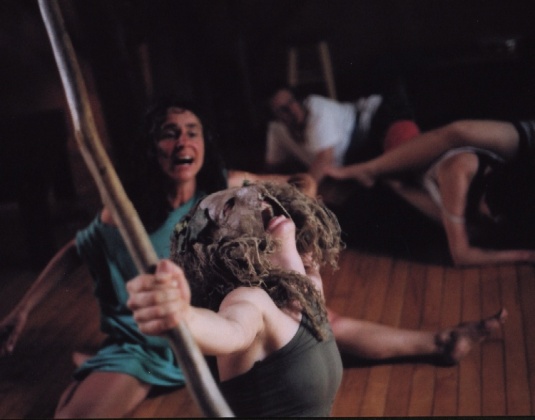
Kathleen Morgenthaler & Nicole Champagne from the production By God Possessed
In the early years the primary focus of research was in the area of Greek myths and the work on archetypes as defined by Eliade, Jung and Hillman. Our point of departure was the understanding that archetypes are primary images, and images are the origins of the creative act in theatre rehearsals and performance including the process of writing, directing and staging. The image work/play is aligned with the great strides made in modern depth psychology. According to Hillman, depth psychology existed with the Greeks [and probably even earlier] and this we see in the stories or myths of the gods, goddesses, nymphs, satyrs etc. And these myths are treasure houses of stories about the human condition to which the Greeks gave the name drama; and from drama emerged theatre as we know it.
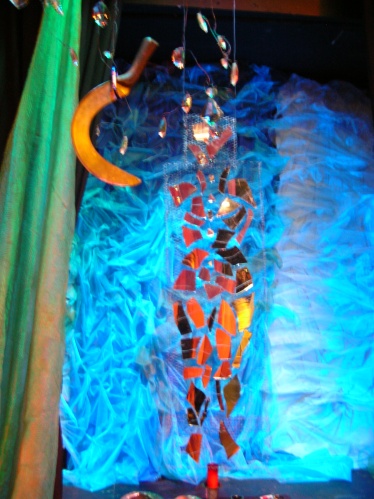
For the Greeks the theatre festivals were communal acts of worship, celebration and healing. If there has been one main goal for us it is to find the modern equivalent of such healing processes while assiduously avoiding the entrapment of pseudo-therapeutic processes. Theatre, however, we feel still has this possibility of communicating the direct experience of mystery, wonder and awe, so lacking in our contemporary culture. In a word, theatre research for us, at least, is this on-going, repetitive search and recherche for mystery.

Ruminations
by Ryszard Nieoczym
Rumination #1 : Wild Spot / Wildflecken
IN the old German tradition a part of the field must be kept wild and not ploughed. This wild spot in the field is left for the birds and animals untouched. In German this uncultivated spot is known as WILDFLECKEN.
Theatre is that “wild spot” in culture to where one can retreat for periods of solitude, silence, reflection, and to where one’s soul can be nourished and deepened, while all around the life of society goes on in its predetermined course. In the same way that birds and animals find refuge in the “wild spots” from the encroachment of civilization, so human beings need places of refuge to replenish their souls. Theatre is such a refuge.
Soul is fed by images, not by pictures. An image is an organic life process. A photograph captures a moment of that organic flow but that captured moment is not an image, it is a picture of an image. Pictures remind us – awaken our memories- of our personal encounters with images.
Theatre can create images, as long as we remember that the verb to create has also within it a passive as well as an active voice; the passive voice hears the call of the soul, the active voice responds. In theatre praxis the response to the call and allowing the images to emerge from within that call is called creation. For the practitioners in the theatre, the actors, directors, playwrights etc., this is a process of action and reaction, doing and non-doing.
Theatre productions and the performances are structured to enhance the process of perception of the images between the actors on stage and the audience/spectators. Perception is also both an passive and active process on the part of the audience. The images perceived, as organic flow of action, awaken within the spectator the possibility of depth in one’s own soul, not only to passively see but to actively experience. To see, to receive to transform. This is perception.
Theatre has this fundamental difference with film. Film is a series of still pictures edited to create artificial action. Films at their inception historically were called, in fact, “moving pictures”. Theatre on the other hand, is a direct experience of the organic nature of the actor performing specific actions, and not a series of stills. Theatre, then, can and should differentiate between picture and image, for theatre unlike film can create images, and only images feed the soul. And the soul is fed by realizing its own depth and taking the risks to experience this depth. For the audience, therefore, coming to the theatre is a coming to the “wild spot”, a type of risk, to participate actively and directly in the experience via the performance, of the depth of one’s own soul. Thus, theatre is – at its best- a process of sounding the depths of the soul of culture, society and even civilization, in a similar fashion as sailors sound the depths of the waters in which they navigate.
Soul is an active function and not a passive substance; soul creates images as fantasies, an independent and autonomous function of what the ancients called psyche. To enter ‘the wild spot’ is an opportunity for the soul to receive nourishment and then by some secret alchemical process allows its own fantasy images to flow. The soul receives and then in its own time creates.
If we can see images as organic flows of actions then we see that all images are archetypal. According to Jung, archetypes are styles of consciousness; repetitive patterns of behaviour; forms of fantasy. These repetitive functions are necessary for the soul. Or in other words, soul behaviour is repetitive, and this repetitive function leads to depth, like a hawk circling and circling the same patch of earth from the heights and then swooping down to catch its prey. Theatre is therefore, of necessity, rooted in the archetypes. Theatre practitioners, of course, must remain conscious of this fact, and not work unconsciously.
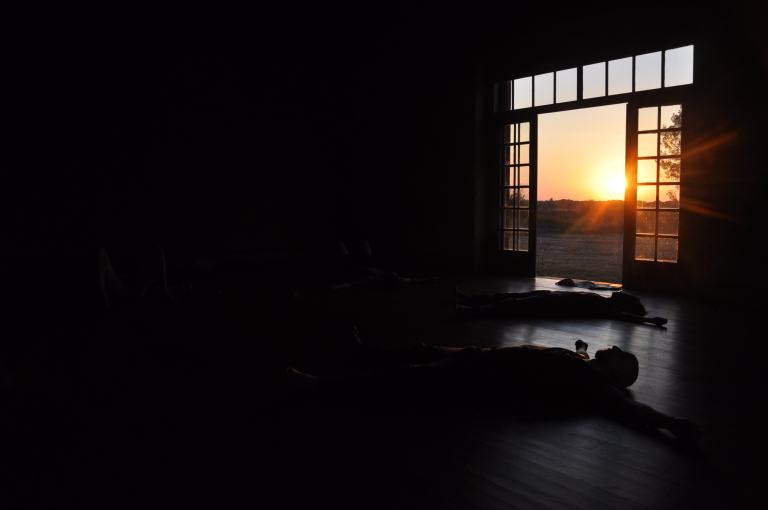
Rumination #2: Archetypes: myth & dream time
Theatre creates reality within its own logic, where time is cyclic and distorted, following a river with its source deep in a world before consciousness, a world I call the underworld, where dreams, myths and stories are born. Time is the eternal now which contains both the past and the archetypal patterns of the future, and like some great whirlpool spirals around and around, ebbing, flowing up and down, forward and backward, simultaneously traveling in a vertical and horizontal direction.
Myths are stories born of necessity to reveal primordial reality which determine all future actions and in fact are the paradigms by which all actions are measured. In many primitive societies when someone, or indeed the whole village, fell into sickness and was in need of healing to alleviate the suffering not only of body but primarily the soul , the storyteller, medicine man, shaman [it was usually the same person] would be called in to tell the old, old stories of the primal acts of the gods – the cosmological stories – and in retelling the stories he would reconnect the hearers, his sick audience members, to their roots, their primal sources. This act of retelling and of hearing often had a curing effect on the whole village.
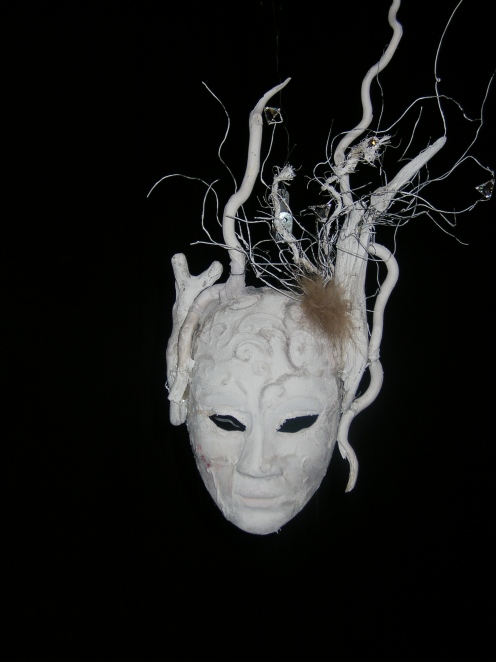
For us as a theatre company dedicated to theatre research it remains a compelling reason to do theatre: is it possible for our own western culture to resurrect its old stories of the beginning times, and by retelling these stories in contemporary garb, begin a process of healing? Theatre, then, could once again be the place of communitas – the place of sharing, the place of communion – where in sharing the retold stories, the whole theatre audience makes its descent into the underworld, via the royal road of the imagination and fantasy to reconnect with our own lost primal sources. Seen this way, theatre as a cultural artifact erupts at the Crossroads where the invisible and primordial depths – the Underworld – intersect with the visible, horizontal cultures. The theatre experience for the audience and the actor is an immersion into the realm of the mythic. In the theatre, thus conceived, we enter into Dreamtime, fully awake.
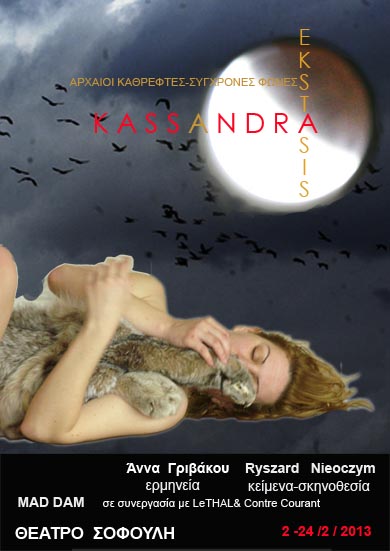
Cosmogonic myths reveal in story form how the old order changes and are replaced with a new order. One of the central archetypal myths of Western Culture is rooted in Greek mythology: Zeus in a conspiracy with his mother Rhea/Gaia, castrates his father Cronus and sets up a new world order and hierarchy on Mount Olympos. This primal violent act of son castrating his father, sets the pattern of power and dominance and violence for all future generations of men and women in their relations to the Gods and Goddesses and to one another. Gods descend to the earth to rape and violate men, women, children, animals, nymphs, dryads; in fact everything which we call the natural world. That is to say, nature. The meetings {and thus mating} of women and men with the Gods usually begins with abduction and rape, and invariably ends violently and tragically for both men and women.[There are rare exceptions. But very rare.] This pattern of primal violence then repeats itself in human history between man and woman; father and son; daughter and mother; woman and man and the state; state and state; and now ever more clearly, woman and man and nature. Our production of PANDORA’S JAR, [1995} retells a very ancient conflict of family violence, betrayals, lusts, dreams and the hope of changing the very old, old patterns.
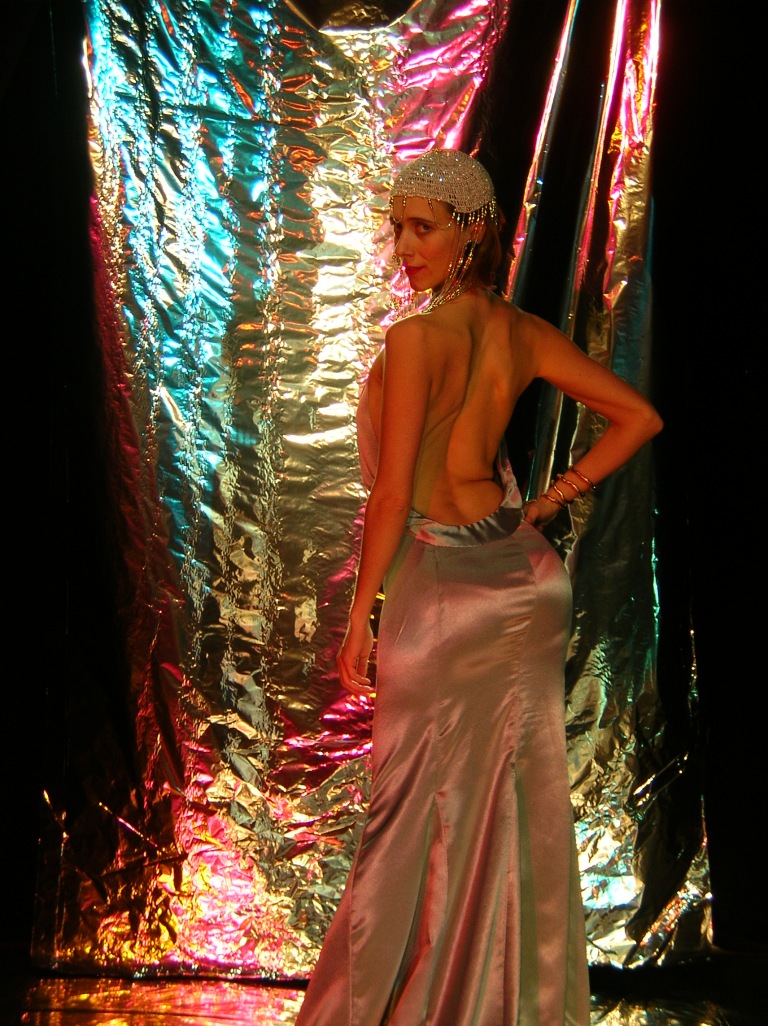
PANDORA’S JAR as a project underwent several metamorphoses. It began as the MONSTER PROJECT where we asked several questions about the ancient monsters in Greek mythology. Why were most of them women? Why was the feminine aspect so important to the essence of the monsters? Following upon Jung , we were intrigued by his notion that all the ancient gods were now internalized and were in fact seen only through the diseases of the soul. And if the gods were internalized, what of these ancient monsters? Did they not also dwell within? Working under the umbrella of the Tanz und Theaterwerkstatt/ Ludwigsburg we created several pilot projects to explore some of these themes. PANDORA’S JAR was the result of this research and exploration process.
Ruminations #3: Broodings on Archetypes
Archetypes are patterns of behaviour; in ancient Greece, the cosmological stories of creation plus the rise of the Olympians are the patterns of behaviour of human beings. Their myths/ stories are genetically encoded in us. Their myths reveal the patterns of imagination, the images within the psyche, and that the psyche can only be known through the understanding of these stories. The myths of the gods and goddesses are the encoded stories of our fantasy-soul. The stories are the revelation of our soul depths. To know the depth of our personal soul is to know the patterns of the gods, and the presence of these deities within our psychic structure. Ancient myths: modern depth psychology. Depth psychology is a meeting once again with our ancient ancestral voices. Listening to the entrapped voice of the god or goddess is to hear our soul’s needs. Listening to the voice allows us to meet with our gods and to know what god or goddess to worship, placate, praise, propitiate, acknowledge.
Historically, the rise of myths is a parallel development with the evolution of consciousness and self – awareness, even the political struggles of nation states, war, conquest, pillage, rape, and enslavement. The stories of creation, the rise and fall of the gods, historical conquests of tribe against tribe, happened in tandem [pace R Graves], myth feeding history and history feeding myth. Both the myths and the history reveal the evolution of the psyche, the discovery of itself, its depths, its teleology and its ontology.
It is the story tellers, bards, poets and the ancient pre-Socratic philosophers who were continually looking for the primary causes, the primal images, to reveal to man the ways of the gods, so that man would know what gods to worship and appease, to make life to be lived in harmony with the will of the gods, to be in rhythm with the divine workings of the cosmos: To align oneself with the will of the gods. The religious history of western civilization is the struggle of man to know the will of the gods, and to live in harmony with that will, no matter how inscrutable, mysterious, and dark.
The Greek dramatists from Aeschylus on served primarily a religious function of revealing in their dramas the will of the gods, the mystery of this will, and how man could through a deeper understanding achieve a proper balance and harmony in relation to the divine will. The social, political, cultural and economic structures of the city states depended upon knowing the proper relation to the gods and re-enacting the proper rites correctly. These rites were also patterns of behaviour rooted in the psychic needs of the participants. These patterns often were the stories of the gods, represented and enacted. Theatre arose from such rituals. The evolution of drama from Aeschylus to Euripides never loses its primary purpose, to reveal the ways of the gods to man. This educative purpose revealed the way of the gods, not without irony, sarcasm, doubt and skepticism, but always being true to its primary purpose.[ Here we might remember Schopenhauer’s definition of educare, as liberation or freeing]
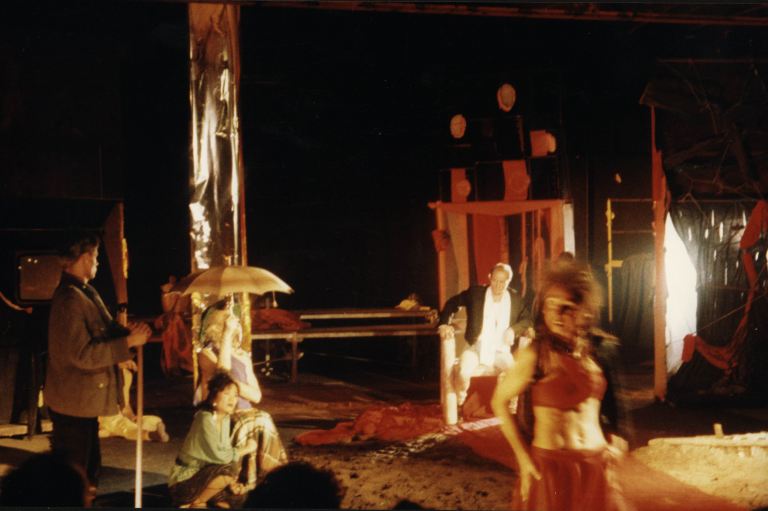
The root of the word religious comes from yoke; to be yoked to the will of the gods; to be in tandem with the god at your side; not to struggle against the yoke, but to go with the god in harmony. Over-weaning pride, or hubris, which is the birth of the heroic mode of perception – is a rebellion, a revolt, a reaction against the yoke imposed by duty or custom. Prometheus Bound by Aeschylus is the archetype for the humans of the heroic ideal, and the tragedy lies in the clash of two archetypal forces, both rooted in necessity, annake, struggling for supremacy.
The story of the birth of the gods and the rise of the Olympians is the story of rebellion, of revolt against – it is always a violent reaction against– the established order, and the subsequent establishment of a new order. Each new order becomes as tyrannical as the last. The evolution of the human psyche is the story of violence, battles, wars, rape, castration, and murder. All archetypal stories of change or evolution are violent and bloody, a return to primary chaos, and an emergence into a new beginning. Once the new order is established it must be defended primarily through force. The genius of Greek drama is the struggle to perceive and reveal the deeper order through justice – laws which are established in harmony with the will of the gods- where justice is the harmonious balance of man, state and the gods. Whatever force was perceived to be a threat to the established order had to be eliminated through the application of the law. The law was always a yoke and this yoke was the way of the gods.
‘Art imitates nature’-Shakespeare. For the theatre this means to create reality which by analogy imitates nature. Nature understood not simply as the surface reflection of a 19th century landscape – but nature in all its vertical and horizontal dimensions and all the cruelties, subtleties and complexities of the human condition both rational and irrational, height, depth breadth. For the actor in theatre to create reality means to reveal the total complexity of life via the craft in a disciplines way. This has nothing to do with realism, naturalism, etc. It is revelation via the body in action.
Man is an animal that is rational: Aristotle! This statement, however, does not deny the irrational extant in the animal-man. The history of drama, human conflict and even the history of wo/mankind, has been – at the roots – the conflict between fundamental aspects-this duality-within wo/man him/herself. The Tao of Lao Tzu, the harmonia of Plato, the charitas of Christ is the intricate balance between the animal nature and the rational [logos] of humanity. It is not – moreover – the conflict between the rational and the irrational as if the animal nature were the irrational aspects in this duality. The animal nature is ‘other’ than the irrationality. Irrationality is only one part of the whole spectrum of the rational. The animal aspect which is hidden or covered over by cultural forms is precisely that which must be uncovered. Plato’s to ti on, or the Hindu Tat Tvam Asi , thou art that, is a recognition that the truth must be uncovered from the accretions of cultural values and historical conditioning. It is an uncovering of the animal nature in the hic et nunc, not a return to some paradisaical primordial condition where wo/man was in an innocent primal state. Such a condition never existed. The conflict is between the over-development of the rational elements: consciousness, intellect, reason, logos[the word-language-the arts etc] and the under-development of the animal elements: carnality, sensuality, sexuality, emotions, sounds, rhythms etc
The resolution of these conflicts – conflicts which are projected onto the external world – requires an understanding of how to work on all the under-developed aspects of the animal elements within ourselves. As in all great spiritual disciplines both East and West – from Ignatius Loyola, the Buddha, Lao Tzu – there has been the recognition and a charting of the hidden landscape of the animal nature and not content to leave well-enough alone, the training of the animal. The chakra systems of the Hindu and Buddhist traditions, for example, represent by analogy the intricate nature of each centre in the human body and the interdependence of all these centres to the whole psychic, psychological realms of the body. [Note here the Buddha’s analysis called pratytja samuta pada: the combined dependent origination of all things]. Each centre is a cosmos with its own pattern of behaviour, physical laws, and inner necessities which are to be discovered, worked upon, and brought into balance with one another and then brought into harmony with the rational elements in the person.
In this we can see the wisdom of the Greek motto: Know Thyself, where the primary task of the seeker on the path of knowledge, was to work on oneself. Where the true path was known the work was a disciplined approach to realizing the proper relationship of psyche to soma or body and mind. The way was always a series of physical exercises to work on the matter of the body. All training was concerned with the physical matter of the body. Even the most “spiritual” paths are material. Even psyche is matter; spirit is matter; mind is matter. And since they are matter they can be worked on and transformed. And from today’s modern physics we know scientifically{sic} that transformed matter produces energy that can be life enhancing. The Chinese alchemists knew this quite well.
Within this brief survey we can take note that for the history of theatre and drama the prime motivation has been the conflict projected out onto the real physical world which included the spiritual dimension of the gods and Goddesses [Even Olympos is material, here and now] manifesting and acting within nature, in the world. The goal of mankind proposed in Greek Tragedies was the correct balance, harmonia, of man to the cosmos. To know one’s proper place in the cosmos; in society; in oneself. The trials of Hercules, the tragedy of the House of Atreus, the whole panorama of the Trojan Wars, the backdrop and soil of so much of the tragedies [a drastic family affair] was to reveal to the polis by the playwrights, of the proper relation necessary to adapt vis a vis the Gods and Goddesses and the polis, the custodian of custom [how even royal families must be correct and in balance]. It is here that the animal nature of man is clearly revealed by Euripides and how far the Greeks of his polis have moved from a proper understanding of the functions of custom and duty and the need for man and woman to understand themselves[their primal natures] more deeply, in order to combat and reconcile the depth of irrationality contained within reason or logos, custom and duty. Medea and the the Bacchae are an appeal for greater understanding of the mystery of the animal in man and woman, and that this animal is a great mystery which is being ignored and denied by the customs and duties imposed by the polis. The appearance of Dionysos in Thebes [the last God to come to Olympos, but according to some traditions also the first] who demands acceptance represents not an irrational eruption into the life of the polis but a newly won recognition that the restraints of culture must be harmonized/ balanced by a celebration of the animal nature in men and women. [Heraclitus says of the mysteries of Dionysos that if they were not done in the name of Dionysos the acts could be considered obscene]. When this animal is denied it is then that the dark irrational depths erupt as if they were volcanic, and destroy those who are closest to its centre.

This hidden connexion between the animal and the irrational aspect of reason in modernity has been explored extensively by depth psychology from Freud, Jung, and Hillman etc. In Greek mythology this hidden connexion is represented by the images of the Underworld which was ruled over by the Lord of Death – Hades – and his wife Persephone. The God of the Underworld, one of the original Gods who divided the rule of the Cosmos, with Zeus and Poseidon, was also known in later Antiquity as Dionysos-Hades {Again Heraclitus is our source for this as well as some fragments from known Orphic literature}. This hidden connexion between Dionysos, – the God of Madness, Intoxication – who is the gift of wine and Hades the invisible lord of death revealed to the Greeks the inner connectedness of our animal nature to the deeper depths of the total human being: both animal and divine.
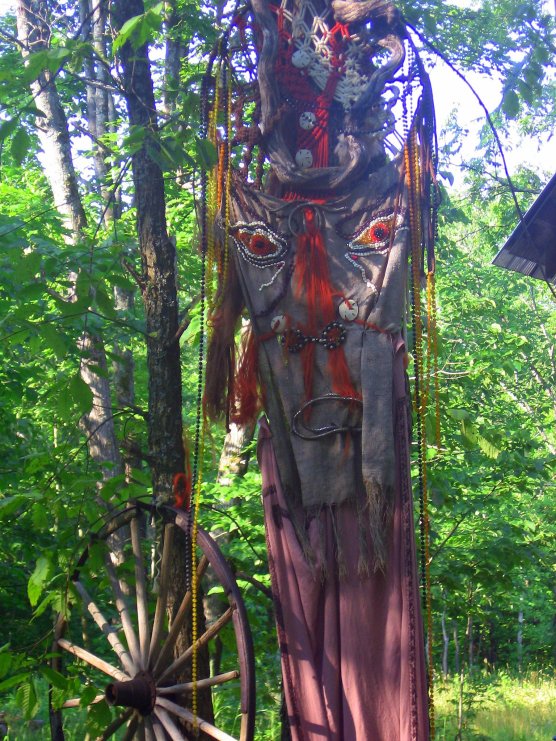
CODA: The Contradictions Vocare means to be called, from which our term vocation arises. We are called to do theatre but then it becomes necessary to make a profession out of the vocation, a career. For Goethe writing was a calling not a career. His career was to do administration for a German state: Wiemar. For us however, the demands of a vocation and the demands of a profession are complex and often in opposition to one another. Thus, the great contradictions in personal conduct; the fragmentation of personality; the division into private masks and public masks. To search for wholeness and completeness within the theatre is a contradiction in purpose. Unless theater once more can be seen as a vocation and not only as a Profession or: unless theatre as a vocation can co-exist deliberately parallel/side by side/ with the Profession of theatre where each compliment the other. A Big Question! This is the fundamental contradiction facing many students entering theatre training in Institutes. This problem / difficulty,this contradiction is never directly addressed.
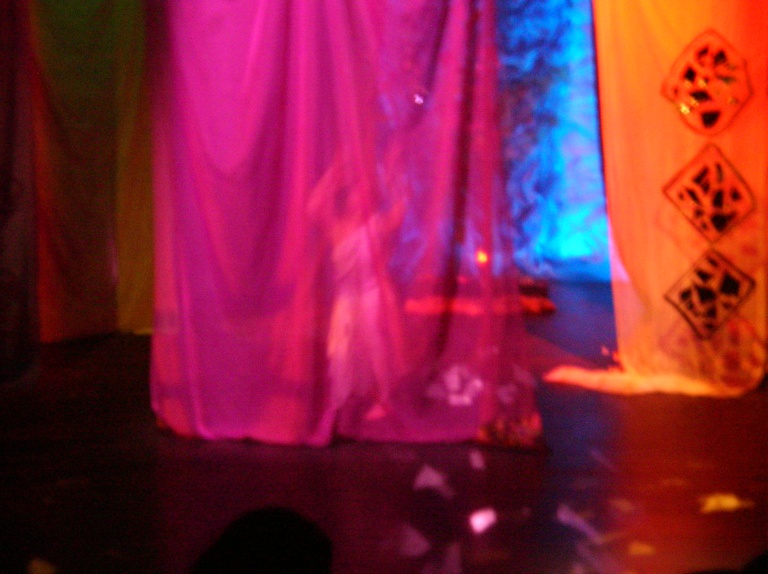
|
.






